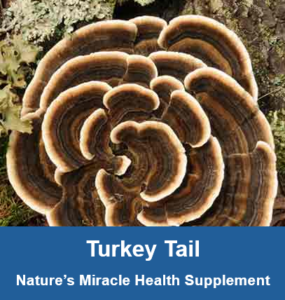 Nature provides us with life and the means to support our lives. From water to air to food, all comes from nature including a miracle health supplement—Tramete Versicolore. Most call this fantastic fungi “Turkey Tail” because the topside of this magic mushroom looks like the tail feather patterns on a wild turkey.
Nature provides us with life and the means to support our lives. From water to air to food, all comes from nature including a miracle health supplement—Tramete Versicolore. Most call this fantastic fungi “Turkey Tail” because the topside of this magic mushroom looks like the tail feather patterns on a wild turkey.
I started taking turkey tail supplements eight weeks ago. Like a miracle, this over-the-counter product cured the gut-wrenching indigestion of my life-long upper GI ulcer and the stabbing inflammation in my neck and shoulder sternocleidomastoid muscles caused by accidental cervical vertebrae fractures. In this short time, less than two months, I now eat normally and have full motion range of my upper body. I am discomfort free, and I swear it’s because of turkey tail.
Don’t take my word for it. Ask Rita (my wife) who started on the turkey tail trail the same day as me. Her chronically stiff and sore shoulders, caused by work-induced / job-related MSI injuries, are almost stress-free. And listen to the millions and millions of people from around the world who, for at least 5,000 years, have taken daily doses of this widely available polypore.
We’ll get into what this edible potion is and what it does in a bit. First, let me tell you the story about how we were introduced to turkey tail.
Rita and I are avid hikers. On June 1st, 2024, we did 8,700 rucking steps. That’s hiker-speak for up-and-down, step-over-rocks-and-roots, strolling with packs and poles. Then we swung by for a late lunch at the Shady Rest at Qualicum Beach on Vancouver Island which is our favorite on the VI pub crawl.
Our server, Alize, greeted us with, “What have you guys been up to today?”
Rita replied, “We just came from a hike at Little Qualicum Falls.”
“Oh,” said Alize. “I love that place. That’s where I get my turkey tail.”
“Your what?” I asked.
“My turkey tail. It’s nature’s miracle health supplement.”
Now me being curious and not knowing of this stuff, I asked Alize to explain. She did, and she went on for at least ten minutes expounding the virtues of turkey tail supplements. I admit I was suspicious when she claimed turkey tail managed, cured, and prevented all sorts of aches and pains and creaks and groans and hurts all the way up to strangle-holding cancer. But Alize was so enthusiastically sincere that I had to take her seriously, and I sensed she was not some new-age woo-woo nut-bar selling some sort of steroidized snake semen.
We learned that Alize has a side business where she harvests wild turkey tail fungi mushrooms, dries and crushes them, encapsulates the powder, and commercially sells them at a very reasonable cost. “I don’t make much money from this,” Alize told us. “I do this because I know turkey tail works like a miracle, and I want to help other people feel well.” She went on to give many examples.
Once home, I Googled “Turkey Tail” and found gobbles and gobbles of positive information like this article from the highly credible health authority The National Cancer Institute: https://www.cancer.gov/about-cancer/treatment/cam/hp/mushrooms-pdq I found other turkey tail endorsements at WebMD, National Institute of Health, Drugs.com, Bastyr University, PharmEasy, Science Direct, Healthline, National Geographic, AlzheimersDiscovery, US Veterans Affairs, UCLA Health, Dr. Axe, and yes Wikipedia. I also spent time on ChatGPT4 learning that which I did not know about Tramete Versicolore.
Meanwhile, Rita went out to her Thrifty Foods store and into the Vitamins and More aisle. *Waves to our V&M department manager friend, Amy* Rita returned with a vial of Harmonic Arts Tramete Versicolore turkey tail tincture. We took some the next morning, and it’s become magic.
Seriously. Turkey tail works, and this is why.
What’s Turkey Tail Mushroom?
Tramete Versicolore is a living fungus belonging to the Coriodaveae family. It’s a shelf or bracket mushroom as it bonds to elevated decaying wood surfaces both vertically and horizontally and does not grow from the ground with stems like saprotoph mushrooms. And unlike saprotophs that reproduce through gills in the underside of their head, turkey tail spawns from pores in its belly.
Turkey tail is found worldwide except for Antarctica. It’s the most common forest mushroom and works as nature’s decomposer of dead wood. Mostly, turkey tail grows on upright or fallen hardwood (deciduous) trees but is sometimes found on softwood (conifers). Rarely does turkey tail form on living trees unless they’re sick and in the last stage of life.
You’ll often hear turkey tail called “Hikers Mushroom” as it’s readily visible from hiking trails, generally in shaded and humid areas. It’s not particularly sun tolerant and in North America turkey tail blossoms in the fall and on the north side of its host. You’ll find turkey tail growing anywhere from one guy alone to large colonies of rosettes.
Although turkey tail tops have similar wavy patterns like their namesake, they come in a huge variety of colors—browns, grays, tangerine oranges, blue-silver, greens, cinnamons, off-reds, purples, and across the rainbow spectrum. There isn’t a consistency to turkey tail appearances, and color variations occur in the same colonies.
What is color consistent is the underside where the pores emit spores. These surfaces are white or a creamy off-white with a soft spongy texture unlike the top which is leathery with tiny hairs and feels velvety. By the way, the body of a turkey tail mushroom colony is called the cronk or bract, and its root system that binds the rosette to its host is called the mycelium.
What’s in Turkey Tail?
Turkey tail is part of the functional fungi group, meaning that it works with medicinal properties rather than being an edible delicacy. Certainly, turkey tail is suitable to eat unlike a death cap or a dead dapperling, but it has little flavor and limited nutritional value. It’s in its preventive and healing capabilities that makes turkey tail a mushroom powerhouse.
A key component in turkey tail is beta-glucan. That’s a water-soluble fiber composing the mushroom’s structure that’s loaded with bioactive compounds. Here’s a slide explaining how beta-glucan operates.
Beta-glucans are protein-bound polysaccharides and are responsible for turkey tail’s immune-modulating effects and anti-inflammatory control. There are two types of polysaccharides:
- Polysaccharopeptides (PSPs)
- Polysaccharide-K (PSK or Krestin)
Here’s another slide explaining them.
I found a quote during my turkey tail research. “Both PSP and PSK belong to a group of substances called biological response modifiers (BRMs). As non-specific immunosupportive agents, they work to restore balance to the immune system without a specific target. Given that over 120 strains of turkey tail mushrooms are known to exist around the world, not all PSPs and PSKs are the same but they all act as protein-based polysaccharides which are fundamental to supporting the body’s immune system.”
What Can Turkey Tail Treat?
Turkey tail addresses and treats four main areas. It acts as an immune support. It works as an antioxidant. It works as an anti-inflammatory. And it works to promote gut health.
There are several more sub areas where turkey tail helps. It’s an antiseptic, an antiparasitic, an antiviral, an antibacterial, and some say it’s an athletic performance enhancer not to mention a de-stressor.
And there is considerable, credible, and convincing evidence that turkey tail is effective in preventing, controlling, and curing various cancer forms. Currently, Japan has certified turkey tail extracts for use in cancer treatment. These are not clinical trials. That’s passed. The Japanese national health care system officially approves and funds Tramete Versicolore for cancer treatment.
Here’s a slide show on turkey tail, courtesy of the great website FreshCap.com.
And here’s a super-informative Youtube video on what turkey tail is and what turkey tail can do for your overall health.
How Long Have Humans Known About Turkey Tail Mushrooms?
At least 5,000 years, and I base that on a blog post I wrote for Dyingwords.net about the archaeological case of Otzi the Iceman. In 1991, hikers found the intact and mummified body of a 5,000-year-old man in an Alps glacier. He was perfectly preserved as were his effects—clothing, a bronze ax, a bow and arrow, and a medicine bag. Inside the bag, also perfectly preserved, was a fungus. You guessed it—turkey tail.
Asian medical practitioners have also been using turkey tail treatments for thousands of years. In China, it’s called yun zhi or “cloud mushroom”. In Japan, it’s kawaratake or “mushroom by the riverbank”.
How Safe is Turkey Tail?
Perfectly safe, I’d say. And that’s speaking from eight weeks of daily ingestion. I’ve had zero side effects. No nausea, no cramps, no drowsiness or insomnia, no psychedelic hallucinations, no dietary issues, no diarrhea or constipation, and absolutely no more painful indigestion or any debilitating muscle stiffness. As I said. I’m cured, and I blame turkey tail for it.
Where Can I Get Turkey Tail?
If you’re in Nanaimo on Vancouver Island in British Columbia, you can buy turkey tail extract capsules, powder, and tincture from Amy at Vitamins and More in Thrifty Foods. Or we can drive up to Qualicum and see Alize. Maybe she’ll even take us to her secret spot near the falls, harvest wild turkey tail, and make some tea.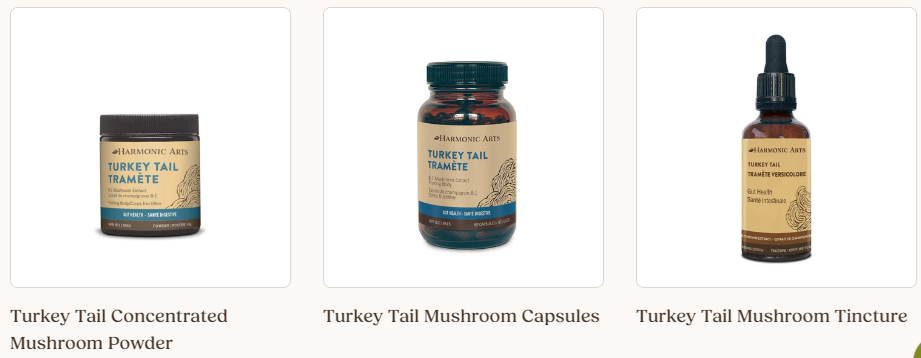 More practically, I think you can purchase Tramete Versicolore at any health food store. Not at a Big Pharma store. Or you can order what you’d like online. It’s not restricted, no prescription needed, and sold to anyone of any age.
More practically, I think you can purchase Tramete Versicolore at any health food store. Not at a Big Pharma store. Or you can order what you’d like online. It’s not restricted, no prescription needed, and sold to anyone of any age.
Rita and I are using a brand called Harmonic Arts. Coincidently, it’s packaged nearby in Cumberland on Vancouver Island. And I recommend checking out Freshcap.com. They have a wide product line and a great website.
Is Turkey Tail Really Nature’s Miracle Health Supplement?
In my opinion, yes.
— — —
Dyingwords.net followers — I’d really appreciate feedback on this piece. Have you heard about turkey tail? Have or are you using it? And if it’s new to you, would you consider trying turkey tail? Don’t be shy about commenting.

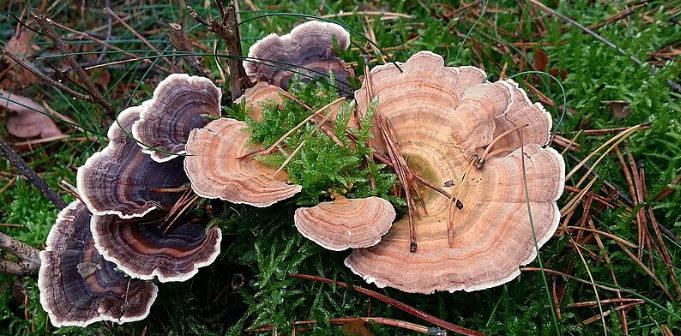
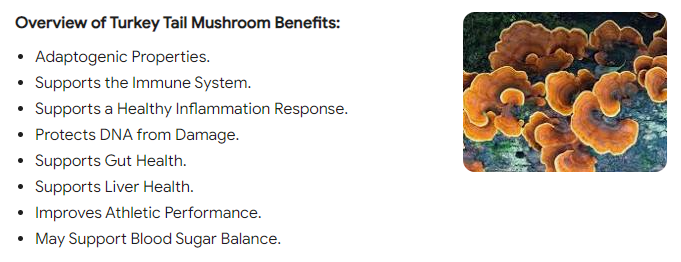


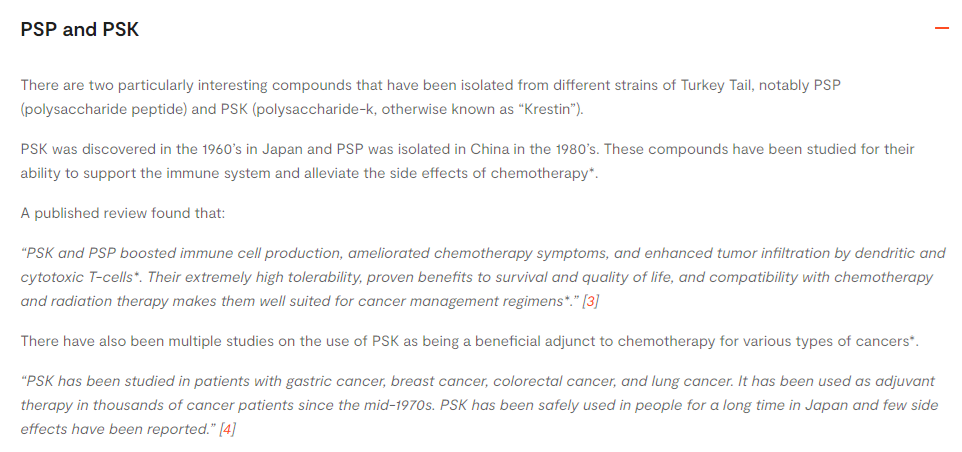
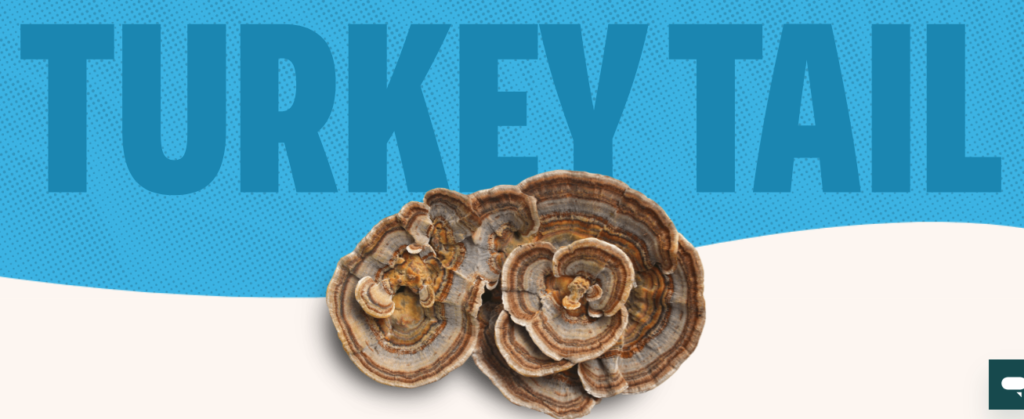





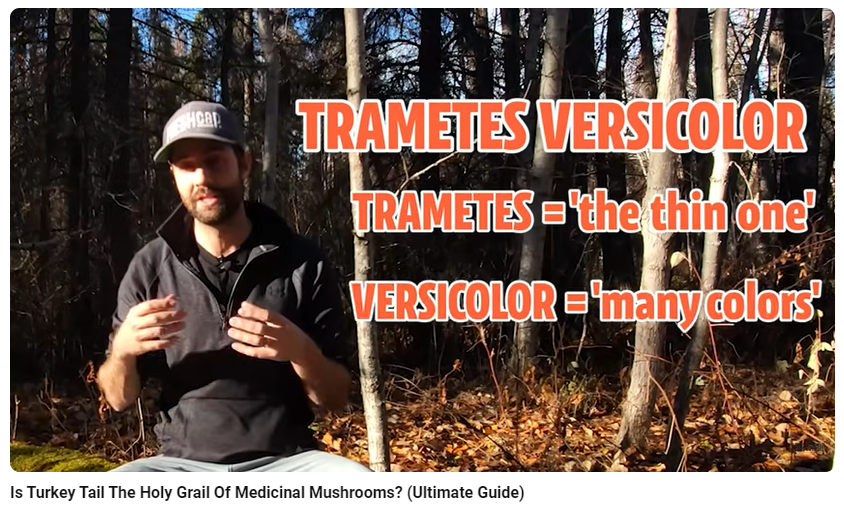
I would love to give it a try. Just need to check with my rheumatologist first because some supplements interact poorly with my monthly shot to control RA and psoriatic arthritis. Once I get the okay, I’ll be all over Turkey tail. Thanks for the info, buddy!
Probably the prudent thing to do, Sue. For me, the effect is in dealing with chronic inflammation and it’s totally worked. However, I’m not taking any other medication. “At least not that I know of.” ~Mr. Bean
I’ll admit, Garry, at first glance of your email, I wondered if you’d been hacked. It was so far from your usual content! With the way your blog hits my email, it forces me to “click the link to see the rest” which, in the case of an unsolicited suggestion of a “miraculous supplement”, I was not about to do such.
So, I rerouted through a previous sending to your website & back to this posting where I could see the whole story AND comments without clicking a link.
Colour me seriously relieved! Haha!
Now, don’t get me wrong: I’m all about natural remedies and supplements. I grow a great deal of medicinal herbs side by side with my culinary plants. And I figure mushrooms high on my list of the good guys (also the mycorrhizal connections in the very soil of my no-till gardens.)
I’ve experimented with both Reishi & Chaga, and I gather Morels in the right season.
I just didn’t expect supplement advice from the guy who brings fantastic morgue/crime content! Consider me paranoid of schemes & hacks in this day and age.
But I’m VERY glad to hear your firsthand experience with Turkey Tail. Enough so that I might add it to my husband’s daily intake of Stinging Nettle/Cat’s Claw/Tumeric for the aches and pains! (That’s via a fantastic herbalist’s company local to me in the States called Medicine Man Plant Company. Merriwether is an amazing herbalist/forager.)
In your research of TT, did you come across anything suggesting tincture over capsules or vice versa? I prefer tinctures myself over swallowing pills, but I’m curious if you saw any research favouring one over the other.
Great comment, Cyn. I always love hearing from you 🙂 Yeah, this is well outside my usual blood and guts, JonBenet Ramsay’s mother-did-it, Charles Manson was not a nice guy type of stuff. But my tagline from the beginning of this blog, 13 years ago, still is “Provoking Thoughts on Life, Death, and Writing”. I tried to put a little life in this one whereas I suppose I could have been expounding the effects of Death Caps instead of Turkey Tail. It’s just that this frikkin’ stuff works – at least for me it works. I can once again eat like a goat and do shoulder checks when changing lanes. It really is a miracle health supplement, and I felt I had to share my experience with others as well as my due diligence into what TT is and how it works scientifically.
As for the delivery method, I don’t think it makes any difference. We started with tincture but switched to powder. I think powder is more economical but haven’t popped any TT pills. We mix 1/2 teaspoon of powder in our morning black coffee, and that’s all there is to it. In my situation, the illnesses (Dis-Ease) – ulcer and muscle seizure – were inflammation related, and TT proved to be a highly effective anti-inflammatory. I can’t (yet) speak to the antioxidant or immune effects and I’m never going to judge it as a sports performance enhancer 🙂 Thanks so much for checking in and sharing your world. And thanks for not writing me off as a kook!
This is fantastic firsthand content, and I sincerely appreciate you sharing it, Garry! You’re absolutely right: this is a great example of showcasing the Life part of your blog, and much more useful than info about Death Caps.
Thanks again! 🙂
Glad to hear you found this piece useful!
Hey Gary!
This article comes right on time for me. I was advised to take TT for my gut problems but I was skeptical and didn’t have time to do research of my own.
And now a fellow INTJ did all the work – and I trust you.
I guess I’m ordering it ASAP.
Thank you.
Mica
Hi Mica (Val)! Thanks so much for stopping by and commenting 🙂 I can only say what’s worked for me, and Rita, and qualify it by what I’ve learned from the known science. I want to say that this is not a one-time quick fix, rather it takes a bit to kick in and is a long-term program. Although we’ve never met in person, I think we know each other and sing from the same song sheet 🙂
I learned about turkey tail a couple of years ago. You can find it almost anywhere in the wood, and I’ve harvested it. It has no flavour but it can be used to make a tea or added to stews. I’ll have to consider drying and powdering it.
I’ve heard about making tea from TT, but not about using it in stews. Makes sense when you think about it. Thanks for stopping by, Virginia!
Hi Garry, Thank you for this extremely interesting article. I’m very suspicious of supplements and their claims and avoid them all. However, this one sounds plausible and I’ve just ordered it! Hope you are well and that your City of Danger project will soon come to fruition. Regards, Terri
Hi Terry! I am well – very well after taking this stuff for the past two months. Like you, I’m also skeptical about the supplement industry. So much so that I’ve never taken anything along this line. But the timing was right with my ulcer worsening and effects from fracturing my neck were making me so uncomfortable that I was ready to take a concoction of eye of newt mixed with pickled sow’s snout if that would make me feel better.
You know the old saying, “When the student is ready, the teacher shall appear”? Well, running into Alize that day was incredibly timely. I didn’t take Turkey Tail without doing homework, but this stuff met the science sniff test. The purpose of publishing this was for me to better understand the chemistry, and I’m so convinced that it can work in the right situations that I had to share this with people.
As for City Of Danger, it’s a work in progress. I’ve been at it for three years and it might be another two yet before the story delivery technology (text-to-visual) is perfected. Stay tuned and thanks for your continual support!